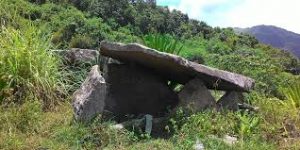Dolmens of Kodaikanal : Fast Disappearing

The dolmens of Kodaikanal, megalithic structures dating back over 5,000 years, are fast disappearing, with less than 50% of those recorded in the early 20th century still standing.
- Dolmens are megalithic box-like stone structures, usually a large stone slab resting on three vertical pillars, built above the ground.
- They often served as burial chambers, memorials, or ritual sites, though some local traditions suggest habitation use.
- Constructed between 1500–2000 BCE (Pre-Iron Age), making them among the oldest structures in the Palani Hills.
- Linked to early tribes such as the Paliyans and Kurumbas, who are believed to be either descendants or related to the dolmen builders.
- First systematically recorded by Jesuit priests Rev. A. Anglade S.J. and Rev. L.V. Newton S.J. in the early 20th century.
- Their surveys, published in the 1928 Memoirs of the Archaeological Survey of India, noted ongoing destruction even during road construction.
- Excavations at Thandikudi and Pethuparai revealed artefacts like black-and-red ware pottery and carnelian beads, proving continuous habitation from pre-Iron Age to early historic periods.
- Features:
- Simple construction: Stones were not cut or dressed, but sourced from natural quarries.
- Cap-stone design: Slight slope on top stone allowed rainwater runoff, preventing chamber flooding.
- Strategic placement: Built on rocky ridges, slopes, or near large rock expanses for natural stability.
- Communication role: Some circles placed within torch-signal visibility of each other.
- Altitude factor: Most sites are at 4000–5000 ft above sea level, ideal for forest produce like cardamom and pepper, explaining ancient settlement patterns.




